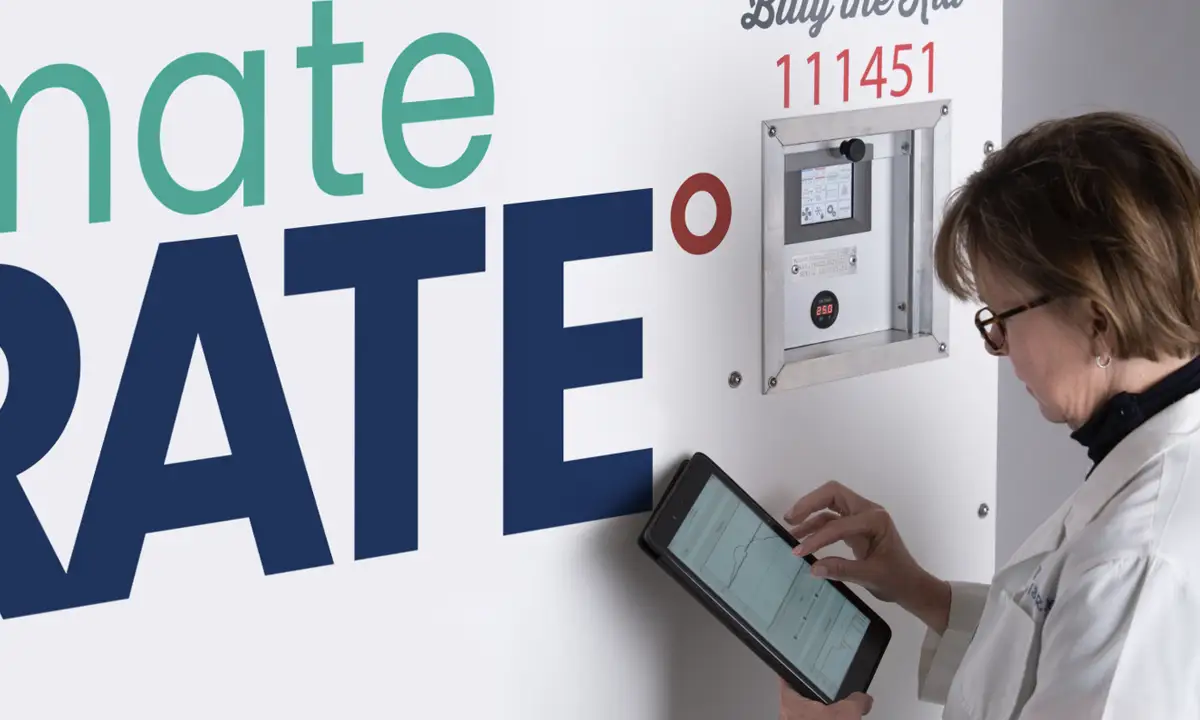
Improving Sustainability of Thermal Management Packaging
Two main types of packaging are used for the thermal management of pharmaceutical, biological, and other sensitive products during transportation – single-use and reusable. Single-use options include extruded polystyrene (EPS) and polyurethane (PUR) insulation while reusable options include vacuum-insulated panel (VIP) insulation and phase-change media (PCM).
Though reusable packaging options can reduce waste generation in theory, the reality is that a high volume of reusable options still end up in landfills every year. This is due to normal reusable container loss from in-transit damage and, more often, the high cost of reverse logistics to ship the PCMs and/or containers back once empty. One recent study analyzed the waste generation of a typical phase III pharmaceutical clinical trial and determined that a total of 772 containers were needed throughout the two-year period.[i] This represents a huge area of opportunity to reduce waste generation caused by the reliance on thermal management packaging materials.
While it may seem challenging to reduce or eliminate the reliance on thermal management packaging materials for temperature-sensitive cargo, understanding the types of thermal control used in shipping helps illuminate how this goal can be met.
Passive vs. Active Temperature Control
Single-use and reusable packaging solutions for temperature-sensitive products are used with either passive or active temperature control methods.
Passive refrigeration involves insulated containers that maintain temperature through the use of dry ice, ice packs, gel packs, or phase change materials (PCMs). Passive systems are often less costly upfront when compared to dedicated refrigerated trucks, particularly for less-than-truckload (LTL) shipments. Passive methods like PCMs, gel packs, or similar are conditioned (frozen) before use in temperature-sensitive shipments to ensure a functional heat sink and prevent temperature excursions that could impact efficacy. Though they can keep temperatures cool they lack the precise temperature control provided by active systems. This can lead to an increased risk of temperature excursions, particularly during delays that may occur during shipment or in fluctuating ambient temperatures.
Active temperature-controlled shipping and storage systems, such as the ClimateCrate™ containers offered by Cold Box Express, Inc. (CBX), represent a sophisticated solution for maintaining precise temperature conditions. These systems actively regulate the temperature of the cargo space using powered cooling and heating mechanisms. This method is especially beneficial for maintaining the integrity of high-value, temperature-sensitive cargo across varying ambient conditions. The pallet-sized design of the ClimateCrate and ClimateCrate FLEX economical, reliable, and green alternative to traditional CRT, refrigerated, and frozen transport. They can be used in an LTL network, standard box trucks, or high-roof cargo vans in shared loads with dry pallet goods or consolidated shipments of cargo that needs to be transported at different temperature ranges.
Thermally Controlled Shipping and Storage Sustainability Considerations
Waste Reduction
From an environmental standpoint, passive systems may initially seem less impactful as they do not require energy input during transport. However, the indirect environmental costs can be significant. In a recent study of the reuse of shipping materials in the intravitreal bevacizumab supply chain, it was found that shipping waste of single-use polystyrene foam coolers, as well as disposable cold packs, contributed to “83% of the overall landfill produced by intravitreal injection procedures” alone.[i] Reducing this reliance on single-use packaging can eliminate on average 1,122 tonnes of carbon dioxide equivalent (CO2e).[ii] Active temperature-controlled ClimateCrate and ClimateCrate FLEX solutions are designed to be integrated as part of a fleet for the shipping, or storage, of temperature-sensitive materials. They are inherently designed to be reused, creating a significant reduction in waste per shipment.
Lowering Emissions
High-volume cold chain industries often require thousands of shipments each year. Transporting single pallet shipments of product via LTL (vs truck load) by consolidating loads through the use of ClimateCrate containers represents a significant reduction in carbon emissions as ClimateCrate containers only emit warm air from the HVAC process. Moreover, the ability to use non-specialized transport vehicles and the reduction in the number of trips contribute to a lower overall environmental impact.
Reduced Costs
Passive shipping options that are used once not only impede sustainability efforts to reduce waste, they also increase overhead costs as passive shipping components are only used once. The average 2-day transit for a ClimateCrate shipment uses about 8 KW of battery power. At a rate of $0.14/KW this costs $1.12 in recharging costs for the battery.
In contrast, while passive systems might not require energy use during transport, their limitations in temperature control and the potential need for more frequent shipments can result in a less sustainable solution overall.
Improved Thermal Stability
While both passive and active temperature-control methods have their uses, the advantages of active control are clear, particularly when it comes to thermal stability.
They provide real-time validated monitoring and temperature control, ensuring that products are kept at a predefined setpoint temperature. This is crucial for industries like pharmaceutical logistics, where even slight deviations in temperature can compromise the quality and efficacy of drugs.
Conclusion
When evaluating eco-friendly and sustainable options for temperature-controlled shipping it is important to make an informed decision between passive and active refrigeration methods.
Active temperature-controlled shipping and storage, as exemplified by CBX’s ClimateCrate solutions, offer distinct advantages in terms of both eco-friendliness and sustainability. By ensuring more precise temperature control and reducing the reliance on larger refrigerated trucks, which are less energy-efficient and generate higher emissions, in favor of LTL shipments and reducing the reliance on single-use packaging, ClimateCrate containers from CBX help numerous industries meet their sustainability goals while protecting temperature-sensitive cargo.
Learn more about what makes CBX the trusted choice for shipping and storage of high-value temperature-sensitive cargo.
i Goellner, K.N., Sparrow, E. An environmental impact comparison of single-use and reusable thermally controlled shipping containers. Int J Life Cycle Assess 19, 611–619 (2014). https://doi.org/10.1007/s11367-013-0668-z
ii Vo, L.V., Mastrorilli, V., Muto, A.J. et al. Reuse of shipping materials in the intravitreal bevacizumab supply chain: feasibility, cost, and environmental impact. Int J Retin Vitr 9, 34 (2023). https://doi.org/10.1186/s40942-023-00474-9
iii Goellner, K.N., et. al., Int J Life Cycle Assess, https://doi.org/10.1007/s11367-013-0668-z